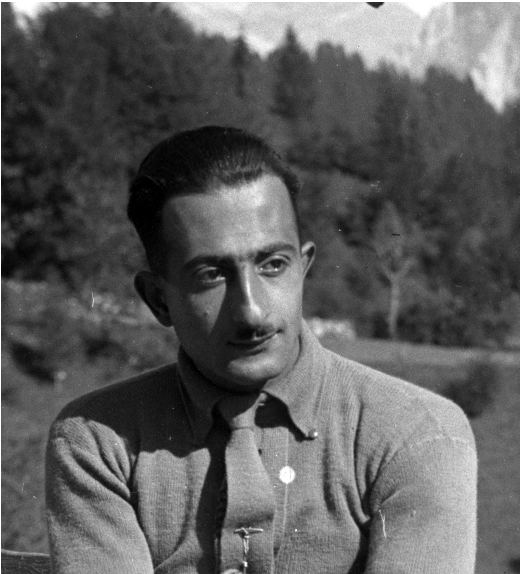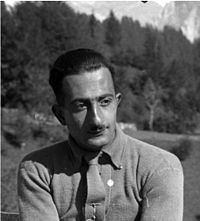Nationality Armenian | Name Ohannes Gurekian | |
 | ||
Occupation Architect, Engineer, and Alpinist Partner(s) Leon Gurekian and Mariamik Azarian | ||
Ohannés Gurekian (Armenian: Յովհաննէս Կիւրեղեան; August 24, 1902 in Constantinople - March 1, 1984 in Asolo) was an Armenian architect, engineer, and alpinist.
Contents
Early Life and Education
Ohannés Gurekian, son of Léon Gurekian and Mariamik Azarian, was born August 24, 1902 in Constantinople. He emigrated with his parents to Italy in 1907, living briefly in Rome and then in Asolo. He studied at the Armenian College Moorat Raphaël in Venice.

At his father's direction, Ohannés enrolled in the school of engineering at the University of Padova, where he received a degree in Civil Engineering in 1924, and completed a specialization in Hydraulic Engineering in 1926 (though he would never work as a Hydraulic Engineer). Immediately after completing his specialization, he was apprenticed to the Architect Ballatore di Rosanna at his firm in Turin.
The Dolomites
After a brief period of collaboration with the engineer Bolzon, of Asolo, Ohannés moved to Frassené Agordino, which he had gotten to know as a regular vacation spot since 1922. Attracted by the mystique of the Dolomites, he established himself there as a civil engineer.
As a student, Ohannés had belonged to the Treviso chapter of the Italian Alpine Club and, having moved to Frassené, he joined the Agordo chapter. There he met the "Axis of Alpinism" Attilio Tissi, Giovanni and Alvise Andrich, and Domenico Rudatis. On the 25th of August 1929, he became the first to climb the "Torre Armena" peak of the Agner Mountain group.
In 1932 he was appointed Special Commissioner of Agordo's chapter of the Italian Alpine Club and, from 1933 to 1946, he would be its president. In 1935 he collaborated with Ettore Castiglioni to draft the section of a guidebook for the Italian Alps relating to the southern chain of the Pale di San Martino.
He is considered a pioneer of modern alpinism of the Eastern Alps, and the refuge at Malga Losch, at the feet of the massif of Mount Agner (which he considered "his mountains" would be dedicated to him posthumously. He dedicated himself to the promotion of tourism for Frassené, where he founded the first Italian "Pro Loco" association and in 1933 he became a member of the Provincial Tourism Council of (Belluno). From 1934 to 1946, in addition to his professional activities, he taught at the Mining Institute of Agordo.
In 1936 he Married Dina Della Lucia Dies (of Frassené). They would have three children: Armen, Mannig and Haïg.
Professional Life
At the start of the Second World War Ohannés moved definitively to Asolo despite continuing, for the rest of his life, to retain professional ties in the Agordino valleys.
At the end of the war he was called to take part in the Committee for the Reconstruction of the Province of Belluno. He identified the traditional architectural styles which should be adopted for each area in need of reconstruction. He also designed the Reconstruction Plan for the town of Caviola, which had been burned down in retaliation by Nazi troops in (20–21 August 1944).
In 1948, driven by the necessity of updating his skills after the unproductive wartime, he enrolled in the School of Architecture and Urbanism of the Insitut Polytechnique at the University of Losanna - Rector of architecture Jean André Tschumi. Despite Having completed his coursework there, his own work did not leave him with enough time to matriculate. His Professional work was fundamentally directed towards Urbanism, to public buildings, and to Industrial structures.
From 1964 on, his sons (first Armen and then Haig) collaborated with him in his Architectural Practice. He died in Asolo the first of March, 1984
1930 -1939
1940 - 1949
1950 - 1959
1960 - 1969
1970 - 1984
along with many educational structures and individual homes
